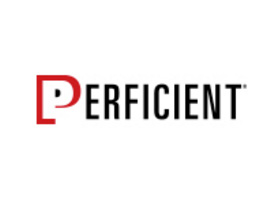Recently, I faced a situation where I needed to create a navigable 3D house within a website. In this house, a user would be able to look around a room by clicking and dragging their point of view, similar to street view on Google Maps. Additionally, there would be clickable hotspots that would allow the […]
Posts Tagged ‘JavaScript’
My Definitive VSCode Setup for JavaScript/React
Hello everyone, following my previous post, “React + Node SSR Basics,” here is the continuation of the topic we reviewed a few days ago. Today we will not be discussing any code. Instead, we will be talking about something that is fundamental when writing code and without it, there wouldn’t be anything. I am, of […]
Securing Your Web API Using Azure Active Directory
Large or small, all companies need web security. And what better way to secure your ASP.NET Core Web API than using Azure Active Directory? Given MVC-style apps are the dominant force in the market nowadays, the majority of documentation on the matter focuses here. That left me, desiring to create a loosely-coupled Web API instead […]
Using TypeScript with the Twilio Flex Agent UI Sample
When we first started working with the Flex samples provided by Twilio, the source code was provided in TypeScript. This provided a dev-time programming environment that I tend to prefer, even though I am far from a TypeScript expert. As Flex and the quick-start samples moved toward general availability, Twilio made the choice to switch […]
Sitecore Symposium 2018: Developer Takeaways on JSS
Sitecore just announced the general availability of Sitecore JavaScript services at Sitecore Symposium 2018. JSS 1.0 will be release with Sitecore 9.1 later this year. In my opinion, JSS is one of the largest fundamental shifts in how websites will be developed on the Sitecore Platform. JSS enables javascript developers, using the most popular javascript […]
What’s In the Latest Twilio Flex Quickstart?
As Twilio Flex nears a general availability (GA) date, the team continues to iterate and fine-tune the Flex Quickstart. The Flex Quickstart provides configuration and code to quickly provision a new Flex project. We’ve been installing various versions of this since the summer. In the 0.12 and 0.13 versions, we’ve seen some interesting changes from […]
Approach Overview: Compiling and Authoring React Applications in AEM
The Adobe Experience Manager (AEM) platform allows for a great level of customizability – there can be endless unique implementations. This level of customization will continue to increase given Adobe’s frequent updates in integrations and emerging technologies. With the surge in single-page application (SPA) designs, JavaScript frameworks like React, Angular, and Handlebars are now some […]
How to Customize Your Own HTML5 Audio Player
Introduction Web developers have wanted to use audio and video on the web for quite a long time. With the standardization of HTML5 and most modern browsers starting to implement HML5, it’s been a great surprise for us. In the past, implementing audio and video in a web application would be very tedious since we […]
But How Do It Know? Dissecting Regular Expressions
To truly understand regular expressions, you have to actually use them. A lot of people who use regular expressions (regex) don’t care to understand how they work; they just Google one that looks like it might work for them, throw it in there, and hope for the best. I don’t know how it works, it […]
The Magic of RegEx: An Intro to Regular Expressions
Despite its bad rap and its esoteric nature, the black-magic voodoo science of regular expressions intrigues me. Few things in web development grip me like regex does. And somehow, like magic, like the magic of regex itself; I become “the regex guy.” Weekly, sometimes daily, I get asked to help write a regex. I, of […]
APS.NET Core Web Application with React-Redux
Introduction React has gone viral among web developers. Compared to other mainstream JS libraries, thanks to JSX and virtual DOM, react has native advantages on DOM control. Redux is a handy way to manage state and React-Redux provides the glue between React and Redux. Going back to ASP.Net core, on VS 2017 Update 3, users […]
So You’ve Got Bugs, Huh?
Whenever you write JavaScript, you’re risking creating bugs. The risk of bugs increases proportionally as the amount of code and code complexity increases. There are ways to avoid bugs; I recommend ESLint, JSHint, or a language extension such as TypeScript to help reduce the introduction of bugs into your codebase. This post isn’t meant to […]






